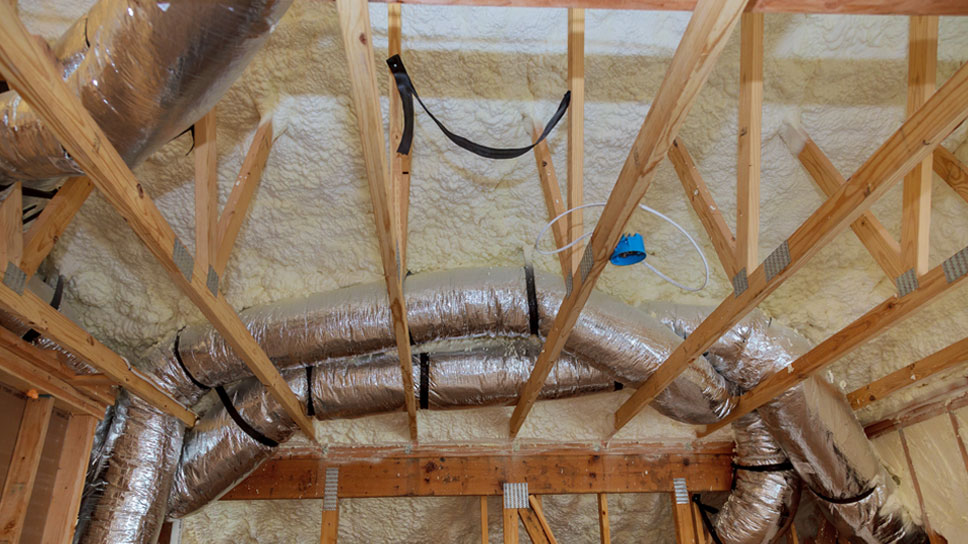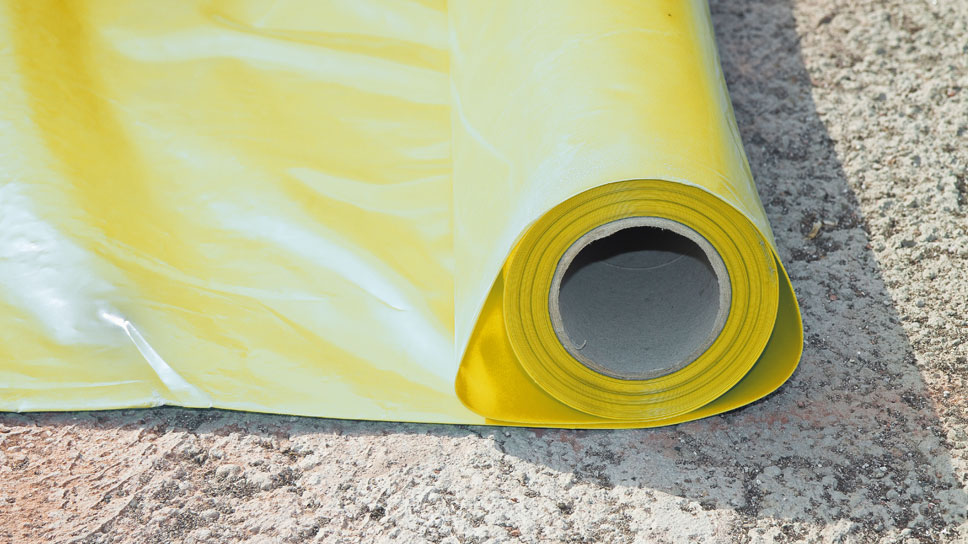Vapour-barrier foil
First of all, let us consider what a vapour-proof or vapour-insulating foil is? As its name implies, this type of foil insulates a partition from the water vapour. The newest houses have more and more airtight windows and doors, whereas attics, as a rule, are already utilisable. All this means that water vapour can accumulate in the attic, as a result of e.g. kitchen activities, close location of the bathroom or even the appearance of water vapour with exhaled air. However, it should not be taken to extremes.
A properly working recuperation or ventilation system should be responsible for effective removal of water vapour from rooms. But we want to be sure that the excess water vapour will not get through the insulation layer during all the years we are going to use our house. How to take care of it?

Vapour barrier film - why and when?
It is known that as both open-cell foam and wool are open diffusively, and the effect of moisture on any material of such parameters makes it a heat conductor, it also becomes normal that a wet insulator will not provide adequate insulation; in fact it will not provide any insulation at all. Installation of the vapour-barrier foil may not eliminate that phenomenon entirely, but it will surely reduce it drastically.
Properly installed vapour-barrier foils allow for the migration of a maximum of 0.5 grams of the water vapour per m2 per day, which ultimately constitutes a small percentage in comparison with the total usable area. Installation of the vapour-barrier foil is recommended especially in rooms with increased humidity (e.g. bathrooms, kitchens, drying rooms etc.).
Vapour-permeable vs vapour-barrier foil
Is polyurethane foam vapour-permeable? Vapour permeability is called water vapour diffusion. In Poland, thermal insulation of attics is mainly based on open-cell foams, which let water vapour through, so yes, open-cell polyurethane foam is a vapour permeable material.
PUR foam allows water vapour to pass through, but the resistance to vapour is greater than with, for example, mineral wool. Larger foam resistance does not close, but slows down the penetration of water vapour through the insulation layer. With the right insulation thickness we can avoid the formation of the dew point, as rapid cooling of the water vapour is eliminated.
How to apply the vapour barrier foil?
Vapour barrier insulation after prior insulation of the loft with PUR foam requires the installation of a double frame. The most common error is the installation of the vapour-barrier foil using only double-sided tape stuck onto the profiles. As a result, instead of insulating, the steam is given a huge surface to migrate. This kind of installation basically misses its pirpose.
Vapour barrier films are joined using dedicated tapes only. Despite the fact that overlapping connections sealed with ordinary tape look properly made at the first glance, they will start to unstick as soon as e.g. heating has been turned on. Please remember that both vapour-proof foil and ordinary tape have different characteristics, and therefore may react differently to high or low temperatures.

 This website uses cookies. By using this website, you consent to the use of cookies in accordance with your browser settings.
This website uses cookies. By using this website, you consent to the use of cookies in accordance with your browser settings.